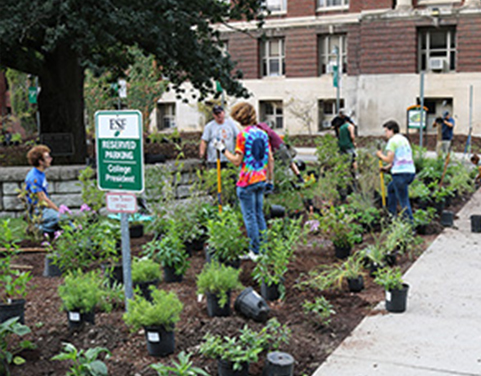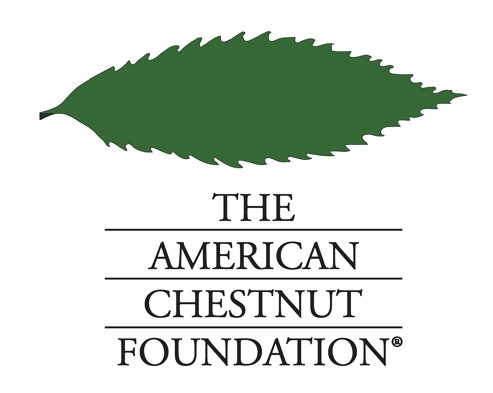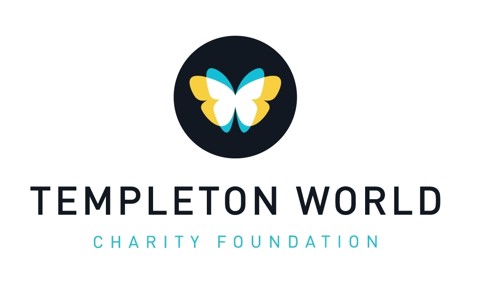Restoration Science Center
Species Restoration
The RSC is working to restore lost and damaged species across the globe. This includes the restoration of rare, threatened, endangered, and keystone species, as well as the management of invasive species for restoration. RSC faculty and staff research ranges from biotechnology and species restoration at the genetic level to restoring landscapes for specific species habitat.
ESF faculty are working to restore lost and damaged species across the globe. This work focuses on the restoration of rare, threatened, endangered, and keystone species, as well as the management of invasive species for restoration. RSC faculty research ranges from biotechnology and species restoration at the genetic level to restoring landscapes for specific species habitat.
Faculty Research Projects
The American Chestnut Research and Restoration Project
Professor Bill Powell and his research team are working to restore the iconic and valuable cultural symbol to the forest ecosystems of the eastern United States.
Of the estimated four billion American chestnut trees that once grew from Maine to Georgia, only a remnant survive today. The species was nearly wiped out by chestnut blight, accidently introduced into the United States over a century ago as people began to import Asian species of chestnut.
After nearly 30 years of research, the ESF team has developed new strains of American chestnut that can withstand the invasive blight through genetic engineering.

The "Darling" blight-tolerant American chestnut trees contain a gene from wheat to neutralize the effect of the blight, but otherwise are genetically over 99.999 percent identical to wild-type American chestnuts. These transgenic trees are currently undergoing a rigorous evaluation process and regulatory review before they can be used for widespread restoration.
The next step is getting the transgenic trees out into the forests, where they can breed with wild-type chestnuts to help them gain better resistance to the disease. To kick start the restoration process, ESF is working to establish production orchards for public distribution, produce transgenic trees for use in larger-scale forest restoration; establish educational plantings at botanical gardens, arboretums and other public venues and develop ecosystem and agricultural restoration protocols.
This project is unique because it is the first to seek approval of a transgenic plant to help save a species and restore a forest's ecology. The concepts and techniques that are being developing for American chestnut will also have broad applicability in managing diseases affecting the productivity of other important tree species such as Dutch-elm disease and elm yellows.
Proactive Conservation and Restoration of New York's Rare, Threatened and Endangered Plans
The research program of Dr. Danilo Fernando, in collaboration with Dr. Donald Leopold and Terry Ettinger, aims to promote the transition of plants from their rare, threatened and endangered status to states in which their threats are no longer present. Through the coupling of basic and applied scientific research and in collaboration with state, industry and private partners, some species have been taken off the endangered list, or at least, the need for listing species was reduced. This proactive approach to conservation and restoration will be focused on such outcome through understanding the growth, reproduction and genetic diversity of the target species in relation to their habitat and ecosystem requirements and long-term persistence.
Research on the following species are ongoing at ESF and as part of the RRSC:
- American hart's-tongue fern (Asplenium scolopendrium var. americanum) is federally listed as a threatened species.
- Leedy's roseroot (Rhodiola integrifolia subsp. leedyi). This species has an S1 (Imperiled) status and there are only two remaining populations in NY.
- American beachgrass (Calamagrostis breviligulata, syn. Ammophila breviligulata) is an ideal model system for the conservation and restoration of native ecotypes.
Project partners include: NY Natural Heritage Program, NYS Dept. of Environment and Conservation, US Fish and Wildlife Service, Great Lakes Research Consortium, Great Lakes Restoration Initiative

RSC Student Research Awards for Species Restoration
Towards the Conservation and Restoration of Rare, Threatened and Endangered Plant Species Restoration
M.S. student Lukas Evans is working with Dr. Danilo Fernando to restore rare, threatened and endangered plant species in New York State.
Our project consists of propagating 4 different plant species: the federally threatened American hart's-tongue fern (Asplenium scolopendrium var. americanum), the statewide endangered fragrant cliff fern (Dryopteris fragrans), the S1 (Imperiled) status Leedy's roseroot (Rhodiola integrifolia ssp. Leedyi) and the Lake Ontario native genotype of American beachgrass (Calamagrostis breviligulata). Restoration of American beachgrass is generally focused on restoring the Atlantic ecotype of the species, however in the Great Lakes region a native ecotype exists, and our research will propagate this Lake Ontario cultivar to use for local restoration in the Great Lakes. In order to restore plant populations in nature, we must determine the adequate environmental conditions required for their survival and success. Examples of these variables include temperature, moisture, light intensity and soil nutrients. Additionally, by characterizing each species' genetic composition we can better identify, protect, and cultivate them in the future.





